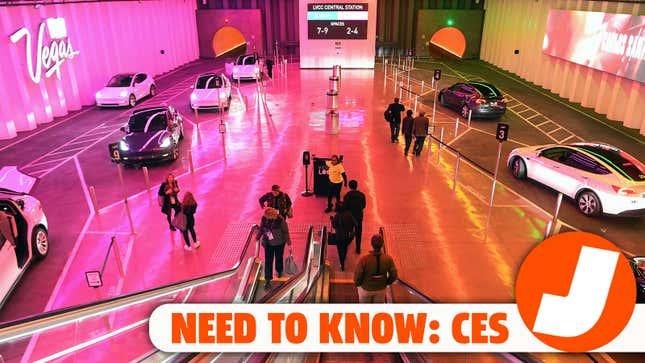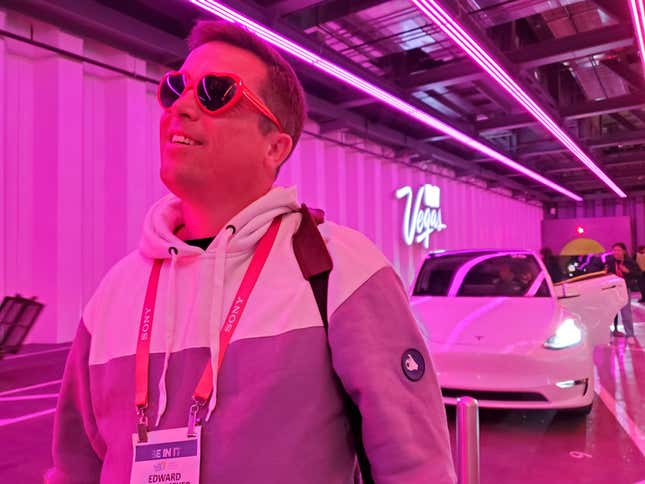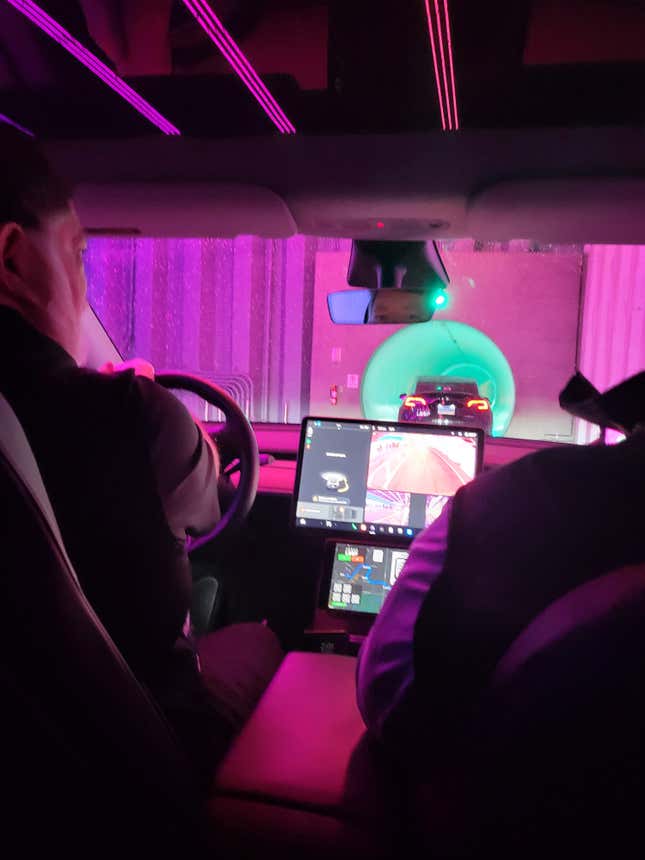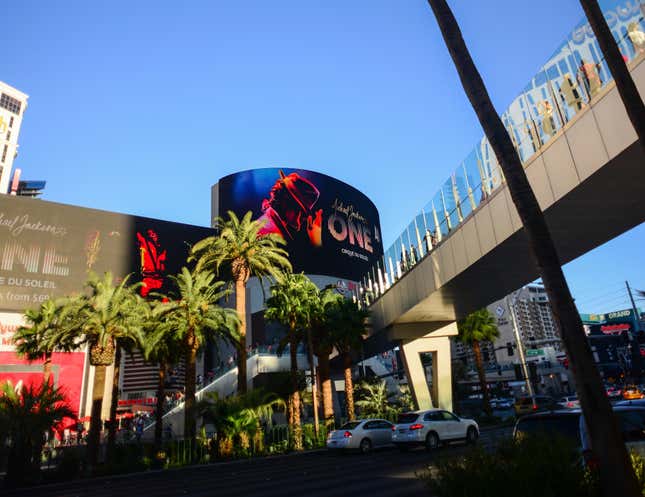
Ever since Silicon Valley began eying up the nearly-$3-trillion auto industry, the Consumer Electronics Show in Las Vegas has become the place to track the hottest trends in mobility technology. And so, every January, people like me descend on Sin City to feast from this all-you-can-eat hype buffet and regurgitate the choicest insights into the public’s squealing maw.
Performed on an annual basis, this ritual seems normal enough. But after three years of pandemic-induced absence, the whole exercise starts to feel impossibly weird. Not only do the trends repeat themselves — this year, artificial intelligence, driver assistance, and automated work vehicles all made repeat appearances as critical trends of the year — but somehow none of them ever make CES or its host city any easier to traverse.
The great irony of coming to CES to witness the future of mobility has always been the fact that Las Vegas is so irredeemably hard to get around. Just to get from one rosy-hued keynote about a “frictionless” future of mobility to the next, one must battle the inhuman scale, perpetual congestion, and incoherent infrastructure of this neon Babylon. And where once the dystopian present of mobility in Las Vegas may have helped sell the techno-utopian glitz on display at CES, the contrast now only heightens the sense that the better future we’re being sold is all one big shimmering mirage.

This impression hits hardest from the back seat of a Tesla, as you’re driven at low speeds through a neon-lit tunnel. The Boring Company’s new “Loop” was never actually hyped at CES — Elon Musk is too cheap for trade shows — but its mix of half-baked solutionism and color-changing LEDs is a typical Las Vegas triumph of futurist aesthetics over pragmatic considerations. If the inherent inefficiency of using cars in tunnels to move high volumes of conference-goers seems obvious, consider that Las Vegas has no fewer than four rail-based people-movers around The Strip, ranging from 1,000 feet to nearly four miles in length, none of which connect to any of the others (let alone Downtown or the airport).

From the very first ride on the new Loop, it’s obvious why the service is only open during conventions: In addition to the army of drivers, each station requires dozens of employees to manage the loading areas, direct traffic, and generally keep a lid on the system’s intrinsic chaos. Even with this mass of labor, I saw huge lines suddenly appear and disappear out of nowhere, drivers take riders to the wrong destination, and a look of exhaustion and frustration that always identifies people who work for Elon Musk. My Autonocast cohost Kirsten Korosec tells me the Loop even shut down its Resort World line early on Saturday night, saving on what must be massive operating costs but stranding riders who might have been depending on it.
Then again, such dysfunction simply blends into the background in a town like Las Vegas. Simultaneously one of America’s biggest pedestrian zones and one of the most pedestrian-hostile places on the planet, The Strip’s design dramatizes America’s tortured relationship with urbanism. The goal is not to facilitate, let alone encourage actual pedestrian mobility between resorts, but to trap you inside a windowless maze of a casino and punish you for ever wanting to go somewhere else. In a city whose main tourist activity is drunken flâneurie (the French term for for wandering around and gawking), the entire Strip is given over to crawling car traffic, forcing revelers to climb third-story outdoor bridges to cross intersections. Even the stylized “City Center” development is dominated by six lanes of traffic, making it almost completely unusable for pedestrians, even with the addition of an embarrassingly slow, jerky tram.

At some point in the battle against Las Vegas’s actively hostile mobility design, you realize: Very few of the new “solutions” on display at CES would actually make getting around the show any easier. At best, they’re mostly band-aids to the kinds of structural problems that Las Vegas takes to cartoonish extremes, but which constrain mobility in less dramatic ways across the country. At worst, they’re futuristic farces, like the Loop’s Teslas in tunnels, which not only steal resources from actual high-volume mobility solutions but make a mockery of the very concept.
This is not to say that companies at CES aren’t developing technologies with massive potential to change how we get around. Watching Nuro’s delivery bots zip around boxes I’d thrown onto the company’s test track, and an autonomous Indy car run laps of a darkened Vegas Speedway using Luminar lidar, it was plain to see how much potential the future holds. The question is not whether new technologies will shape the ways we get around, but how and why.
For years, CES has felt like just one more Las Vegas casino, a whirling blur of possible futures whose long odds are offset by the chance that one of them just might transform everything. Now, after more than a decade of mobility technology mania, it’s clear why we haven’t hit the jackpot: Even the most brilliantly-conceived “solution” is always part of a much broader system of infrastructure, economic interests, and human habits. When we lose sight of this broader context, we fall victim to overhype and outright fraud.
Which, of course, never happens in Las Vegas.
Ed Niedermeyer began blogging about the auto industry in 2008, and his work has since been featured in the New York Times, Wall Street Journal, Bloomberg Opinion, and elsewhere. He is the author of Ludicrous: The Unvarnished Story of Tesla Motors, cohost of The Autonocast, and co-creator of the Not Sure How Much Mobility Innovation I Can Take livestream. You can find him on Twitter @Tweetermeyer and Mastodon at niedermeyer@sfba.social.
